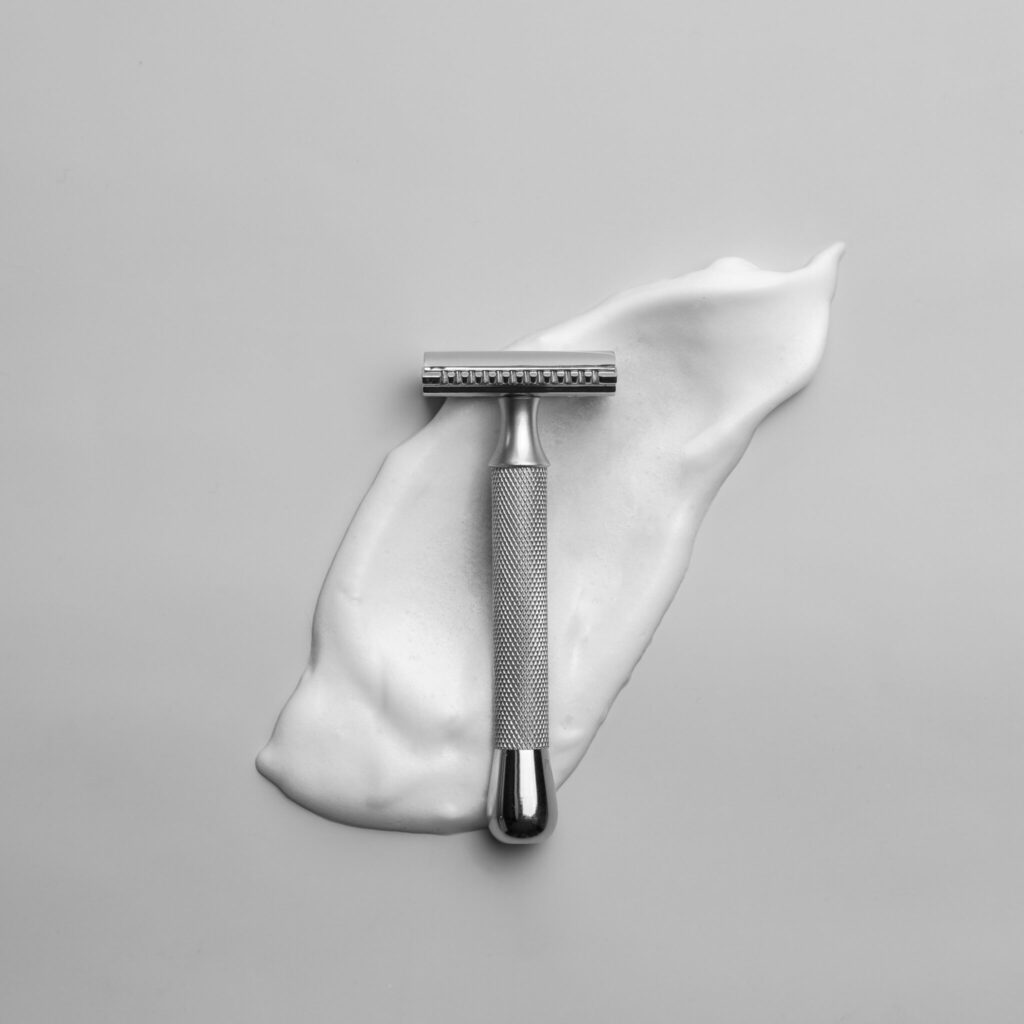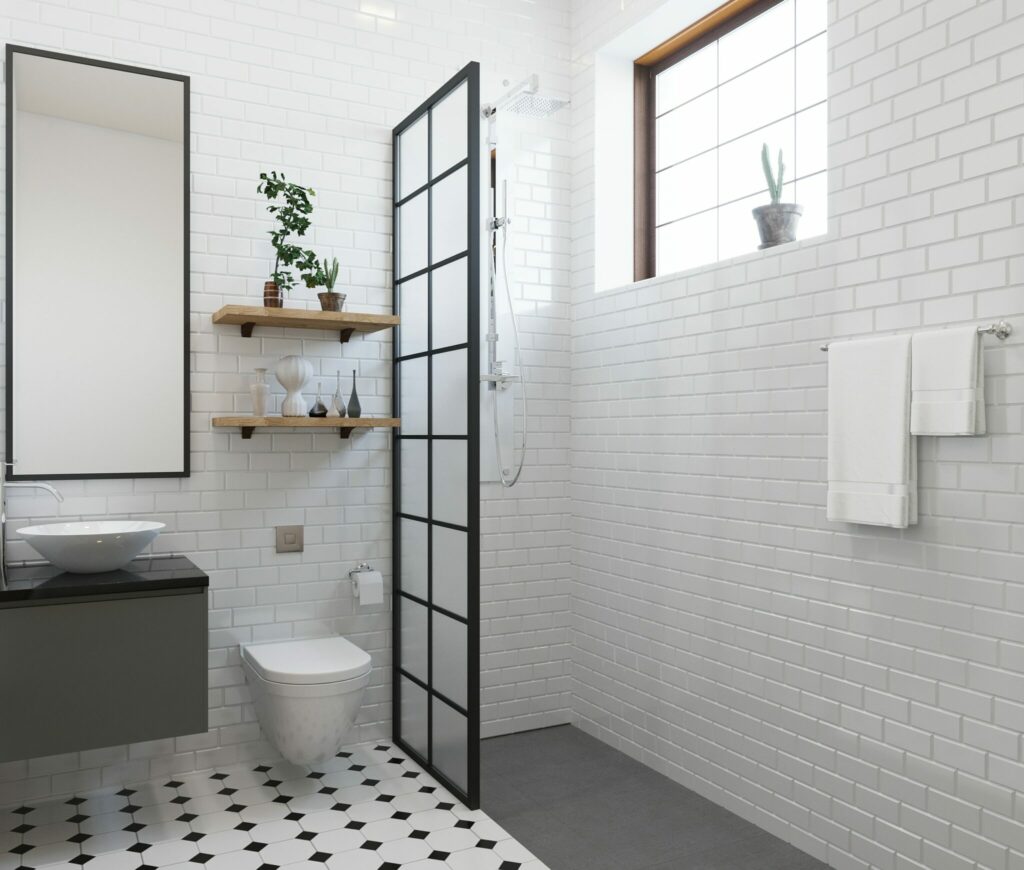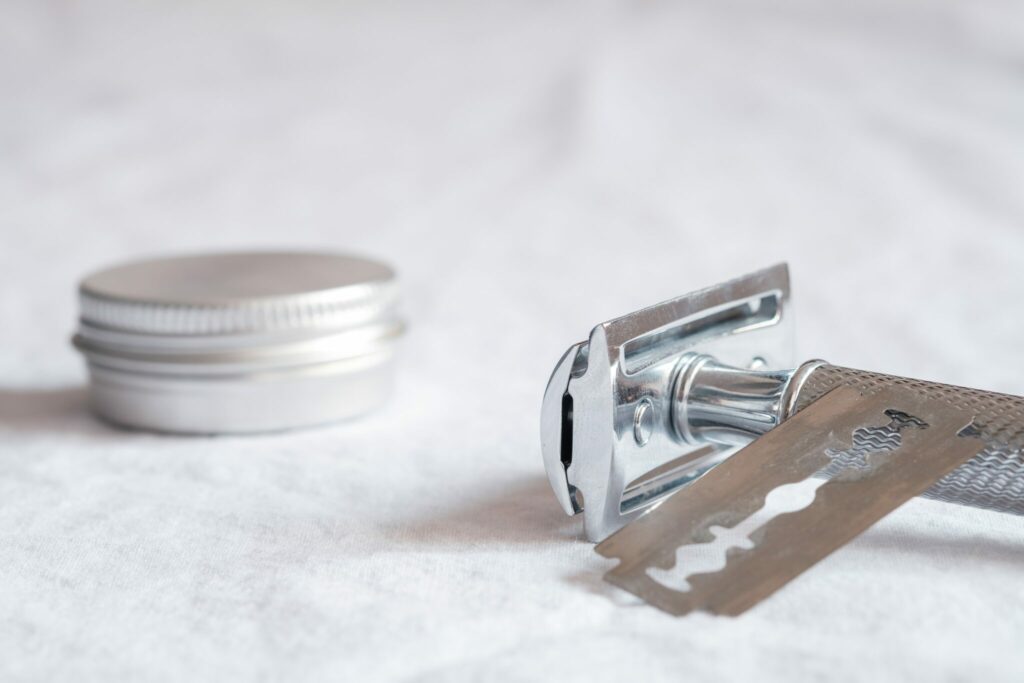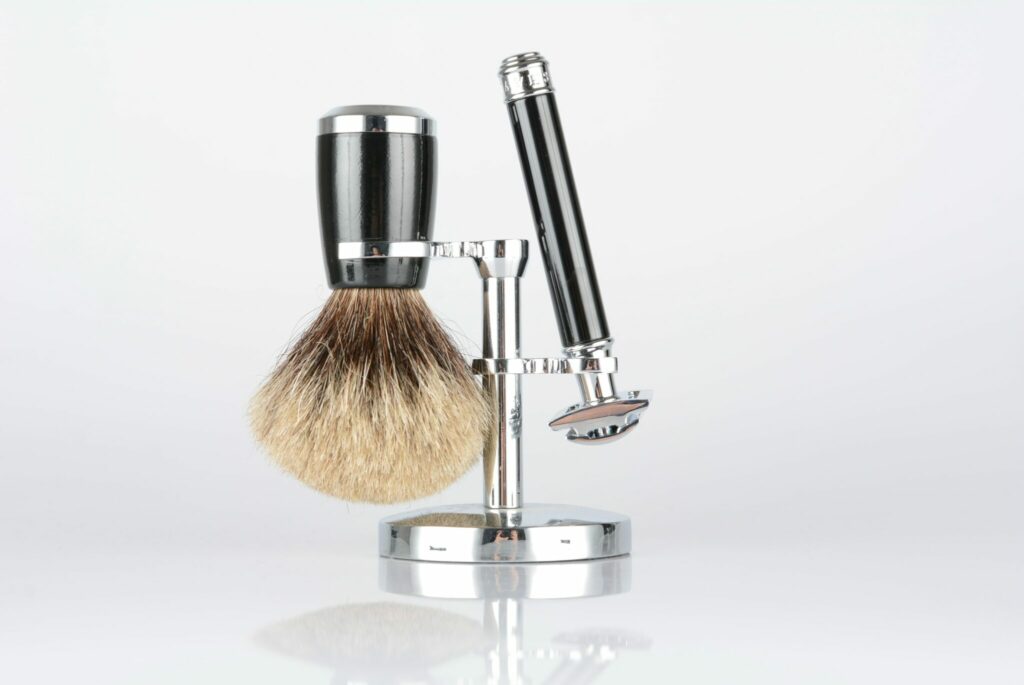Safety Razors:
What are they and how to use them

Back in 2019 when I was looking into how to reduce waste with toiletries and shower products, I came across the idea of using a safety razor instead of a disposable razor or razor with disposable cartridges.
The term safety razor refers to a razor with a single blade used for wet shaving. There are different styles of safety razor, including:
- closed comb (has a guard with layer of protection between the blade and skin);
- open comb (has openings in the safety bar that allow for more contact between your skin and the blade);
- slant razor (has a blade that is torqued);
- adjustable razor (allows you the ability to change the spacing between the blade and the safety gap); and
- butterfly razor (opens from the top with butterfly doors to insert the blade).
I was amazed at how affordable it was to make the switch, both for the initial investment of the safety razor itself, plus the recurring investment of the metal blades. I am still using that same original safety razor I purchased, over seven years later!

How to Use a Safety Razor
I will admit, when I first was making the switch, I could not fully give up my disposable razors. I stuck to using my safety razor only on my legs and then used the disposable for everything else. I did that for months! Just like when you get in a new style of car and have to get used to how it handles, I had to go through that with my new safety razor.
It was a different weight and had a different feel to it compared to the other razors I had used before. I also was extremely nervous about the idea of cutting myself. My legs felt like a safer area on which to learn. I thought for sure I would slice an appendage off or something if I tried anywhere else! Ha!
Truth be told, I had no reason to be hesitant! Once I got used to the weight of the razor in my hand, it really was not that different than what I had used before with disposables. And, when used properly, a safety razor does not have any higher risk of nicking or cutting your skin compared to a conventional razor.
Now, while each safety razor style is sure to come with its own nuances in use, I think the following tips can be generally applied to safety razor use. I can also confidently say that, although I have never shaved my face with a safety razor, I do now feel comfortable using a safety razor on more than just my legs.
Here are my top tips for using a safety razor:
- While some people are confident using a safety razor without any soap or shaving cream, I have found great success using a simple bar soap, from my favorite soap company Earthy Browns.
- Hold the safety razor at a 30 to 45 degree angle to your skin and shave with the grain of your hair growth (at least for the first pass). This may be more-so dependent on the style of your safety razor, but again, as a general rule, this works pretty well!
- Do NOT press into your skin with the safety razor. You only need the safety razor to move across the skin! Safety razors are designed to more easily give you a close shave. No need to apply any extra pressure to the handle when shaving!
- If you are shaving a thicker patch of hair or longer hair, work in increments. First work on reduction of hair, then actual removal. It will be helpful to rinse the hair out of the safety razor as you work, just like with a disposable razor/razor head.
- For the closest shave, make sure to replace your blade before it gets too dull. Depending on the quality of blade you use and the individual use of the blade (i.e. frequency of shaving and thickness of hair being shaved), this may mean every 4 or 5 uses, or perhaps only every two or three weeks. I think you will be amazed at how close of a shave you experience using a safety razor! It is fantastic, even if you are not using a super moisturizing soap or cream during your shave.
- To extend the life of your blades, check out the information in this blog post.
- Store your safety razor in a way that will allow for water to drain and for it to dry fully between uses. We purchased a set of these suction cup soap dishes with razor hooks when I first got my safety razor; they work great to hold our razors AND keep our bars of soap dry in between use.
- Along with the previous tip, make sure to clean your razor as often as is needed in order to minimize shaving soap or cream build up. See the section below for information on how to clean a safety razor!
How to Clean a Safety Razor
There are two main methods I have used to clean my safety razor, and I believe either will work for the majority of safety razors. Feel free to contact the company who manufacturers your specific brand/model to see if they have any information on the subject as well. I typically go three weeks between each blade change and do a thorough cleaning of my safety razor in between each blade change.
Both of the methods I share below involve an initial soak, followed by a light scrubbing. I soak my safety razor in a small jar that allows all the pieces to be submerged. For the scrubbing step, I have a simple jewelry cleaning brush that works great. An old toothbrush will probably do the trick, too!
METHOD #1 – White Vinegar Soak
Take apart/open safety razor. Safely dispose of dull blade (some blade containers have a built-in spot for used blades on the back of the plastic box or you can put the used blade in a safely secured steel can and collect the used blades for recycling). Add safety razor pieces to your jar or container. Fill jar with a 1:4 ratio of white vinegar to water, making sure there is enough of the solution to submerge the safety razor pieces. Gently mix the contents. Let sit for 10-20 minutes. Follow up with a light scrub and rinse. Let safety razor parts fully dry before reassembling with a new blade.
METHOD #2 – Branch Basics Soak*
*This is my preferred method, as I feel like it is the more effective of the two methods and requires minimal effort in scrubbing after the initial soak. If you are new to Branch Basics, feel free to use this referral link for $10 off!
Take apart/open safety razor. Safely dispose of dull blade (some blade containers have a built-in spot for used blades on the back of the plastic box or you can put the used blade in a safely secured steel can and collect the used blades for recycling) Add safety razor pieces to your jar or container. Fill jar with enough water to submerge safety razor pieces. Add three or four pumps of Branch Basics’ foaming wash or a small squirt of their concentrate to the jar or container. If desired, lightly swirl the contents. Let sit for 10-20 minutes. Follow up with a light scrub and rinse. Let safety razor parts dry fully before reassembling with a new blade!

What to Look for in a Safety Razor and Blades
When looking for a safety razor, it is wise to consider the quality of the materials. Are there reviews you can check to see how others feel about the value for the cost? Do the consumers find it consistently gives a clean shave? Does the safety razor have a history of rusting easily or pieces breaking frequently? If a piece does break, do you need to replace the whole safety razor or can you fix the individual piece?
For example, the safety razor I purchased from Edwin Jagger has replaceable parts, should any break. Instead of having to buy a brand new safety razor, I can simply purchase the individual pieces I need.
(Although I think the Edwin Jagger brand is fantastic quality, I have dropped mine from a height of a few feet multiple times over the years and busted the screw-in cap a handful of times. Thankfully, replacing the cap is as easy as making a quick online order through the Edwin Jagger website. It is super affordable, and I can get back to using my safety razor in no time!)
The brand of safety razor I have and highly recommend is Edwin Jagger. I have their double-edged (sometimes referred to as “DE”), open comb ladies’ safety razor. If I were to purchase again, I would go with the same model, but select a textured handle for better overall grip. Edwin Jagger safety razors can be purchased directly through their website or through Amazon and other online retailers.
The brands of razor blades with which I have had good success are: Astra, Feather, and Derby. Many online retailers, including Edwin Jagger and Amazon sell these brands.

Benefits of Using a Safety Razor
If all the above information was not enough to convince you to make the switch, check out these benefits of using a safety razor, courtesy of West Coast Shaving:
From Westcoastshaving.com
- Best Shave of your life: Shaving with a safety razor will get you the closest and smoothest shave of your life while cutting down on irritation. Sounds too good to be true? It isn’t. The tools and process of wet shaving have been perfected over the past 100 years to bring you the best shave of your life.
- Keep money in your pocket: Shaving with a safety razor will save you over $150 in three years compared to the cheapest subscription program out there. Buying Gillette’s? You are looking at over $250 in savings. We don’t like throwing away money here at West Coast Shaving. Keep money in your pocket, where it belongs.
- Never Deal with Skin Issues Again: Multi-blade razors cut your hair below the surface of your skin causing ingrown hairs and razor burn. With the single blade used in a safety razor, you are cutting the hair level with your skin. That remedies your ingrown hairs, bumps, and you will notice that your skin has less redness post shave. In other words, your skin will love you.
- Traditional: Shaving with a safety razor has been around since 1904. There is a beauty in being able to connect with the great men that shaved with this method before you, especially when safety razors get passed down through generations of family members. Your safety razor can become a family heirloom.
- Save the planet: According to the EPA, 2 billion cartridge razors are thrown away each year. The extra plastic and packaging in cartridge razors are filling up our landfills. Safety razors are much more minimal in their waste, and biodegrade more quickly. Cartridge razors may be the most wasteful product we use in the bathroom, start saving the planet now – with a safety razor.
What do you think? Are you ready to make the switch to using a safety razor? Do you have any of your own tips for using a safety razor? Comment below to share with our community!
Yours truly,
Erica Barlow


 Minimizing Waste with Pastured Pigs
Minimizing Waste with Pastured Pigs